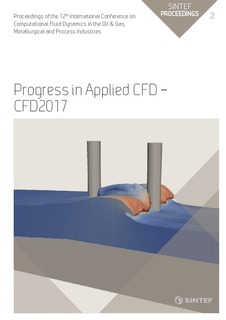| dc.description.abstract | Aggregate shape and structure significantly impact rheological properties of fluids in many fields such as extractive metallurgy, oil field drilling and mineral processing. The morphology of the aggregates determines the porosity of solid structures and their dimensions, which in turn affects the solid-liquid and solid-solid interactions in the mixture, and hence the rheology of the system. Aggregates can undergo morphological changes induced by shear flow. The response of aggregate mixtures in terms of rheology as a function of their shear history has thus been studied in many fields (Coufort et al., 2005) with experimental approaches. Numerical investigations of aggregation dynamics and aggregate restructuration have also been conducted in low Reynolds conditions (Frungieri and Vanni, 2016), or using free draining approximation, in which the fluid particle interactions are exclusively through Stokesian drag (Eggersdorfer et al., 2010). In this study, a fully coupled Eulerian- Lagrangian approach is developed to evaluate the restructuring of aggregates in shear flows for low Reynolds numbers. In particular, a Discrete Element Method (DEM) is used for particle tracking, coupled with Lattice Boltzmann Method (LBM) for solving the liquid flow. An Immersed Boundary Method (IBM) is incorporated so that primary particle shapes and hydrodynamic interactions between particles are fully resolved (Niu et al., 2006). Selected particle-particle interaction models have been implemented in the DEM to represent the mechanical behaviour of aggregates. General attractive and repulsive force models, and the bending moment as described by Pantina and Furst (2005) have been included. Artificial aggregates were created and characterized using fractal dimension and radius of gyration. The evolution of these shape indicators over time has been studied while aggregates are subjected to a shear flow. Preliminary results obtained with fully coupled liquidsolid simulations were also compared with results based on the free draining approximation. In fully coupled simulations, significant perturbations in the flow field were observed due to the presence of particles, which leads to a significant difference in aggregate’s restructuring. Different solid interaction contributions and their underlying impact on aggregate restructuring have been compared, at a given shear rate. While increasing shear or maximum cohesion forces lead to denser aggregates, effect of tangential forces on the aggregate’s morphology appears to be more complex. Also, tangential forces were found to have a tendency to favor aggregate breakage. | nb_NO |
